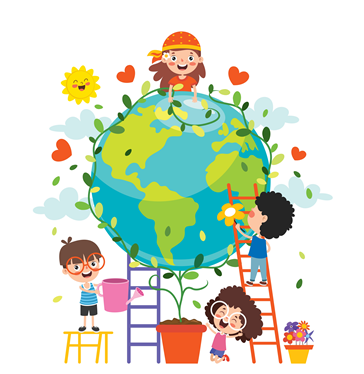The December solstice is upon us and your kids are on winter break. Understanding the proven benefits of outdoor educational experiences, you are hoping to prevent learning loss that can occur over the span of the two to three weeks. However with busy schedules, seasonal sniffles, and general aversion to wandering far from the comforts of home when Jack Frost does his work, you may not be able to fit in popular outdoor winter activities. But did you know that your own backyard is chock full of opportunities to teach your kids valuable lessons? Today we’re going to look at some practical uses of the home front to provide your children with a chance to soak up information while outdoors.
3 Practical Ideas for Outdoor Learning Activities for Kids at Home this Winter Break
1. Icing the Driveway
Say what? Yes, this may seem like a cheeky way to get some chores done but in fact, it’s a great science lesson for your kids. It is also a great way to teach children about how to seek out eco-friendly alternatives to traditional (and harmful) solutions.
Start the process with an information session about how and why many of the road salts and deicers (containing sodium chloride and/or chemicals) found at your local retailer are bad for local waterways, wildlife, and even your backyard garden. Then present them with alternatives that can be found within your own pantry and garden shed. These include the following:
- Alfalfa meal – Born from fermented alfalfa plants, this natural fertilizer is not only great for replenishing worn out soils, it is high in nitrogen (good for melting ice) and due to its dry and grainy nature it adds traction to prevent slips, falls, and skidding tires.
- Sugar beet juice – No luck convincing your kids to drink that gallon of beet juice that’s been sitting idle in the fridge? No problem. You can still get them excited about this subspecies of the beta vulgaris family to melt ice and snow surrounding their home. The sugar molecules from beet juice have a similar effect as the harmful sodium chloride, without the negative impact on the environment.
- Fireplace ash – You get two chores done in one with this option. Fireplace ash dusted on the pathways leading to/from your home not only creates traction, wood ash contains potash which will help de-ice and melt snow in moderate climates. Have your kids use that old summertime sand bucket and shovel to scoop out the ash for your idle fireplace and let them sprinkle it like fairy dust on the driveway.
- Coffee grounds – This organic byproduct has many uses, and melting ice and snow is one of them thanks to the grainy nature and natural acids.
You can take this natural ice-prevention activity a step further by having the kids mix equal parts vinegar and water, pour the solution into an empty spray bottle, and send them outdoors to blast (and wipe) the windows of your home and automobile. The solution can help keep ice from forming overnight.
2. Harvesting Snow
You may have taught your kids about harvesting crops in your backyard and/or community garden in the autumn, but what about harvesting snow in the winter? This fun and simple outdoor task teaches them about sustainability as they collect snow to use for watering indoor plants, cleaning (after mixing with vinegar or lemon) the home, filling the dog dish, and even to replenish household aquariums.
The simplest way to collect falling snow (or rainwater, Vancouverites) is to place large containers outside on the deck or in the yard when the forecast suggests that you do so. If you have a garden in your front or backyard, you and your kids can prepare a rain barrel to collect snow runoff. Reader’s Digest has provided some DIY tips on how to build a mini-rain barrel at home that you can install and use this winter, an activity that your kids will have a blast doing. Just be cautious when setting up the installation during/after snowfall as you’ll probably get pounded by a snowball or two. Dress accordingly and feel free to strike back!
3. Invite Winter Wildlife Into the Yard
Nothing gets kids excited to get outdoors quite like the opportunity to see cute wildlife at play. This can be accomplished in your own backyard as you and your children create a winter haven for local birds, squirrels, and whatever else may be endemic to your region.
Take some of the collected rain and snow runoff (as per item #2 above) and create drinking bowls and birth baths. Have your kids monitor the basins for freezing and break up ice formation daily using a small hammer and/or by pouring hot water into them. Also provide local wildlife with something to supplement their limited winter diets with while mitigating food waste in the home by strategically placing bread crumbs, dried corn, seeds, and nuts about the yard. If you really want to get crafty, you (assuming they need you for this one) and your children can build a cozy birdhouse that will serve as a home exterior adornment and functional place to call home for newfound feathered friends. Encourage your kids to watch for arriving wildlife, take photos, and catalogue the unique species in a colorful scrapbook.
We hope your kids enjoy the above outdoor activities, while gaining some valuable knowledge and skills in the process. Learn more about of our Foundation’s funded programs and causes. If you have any questions, or would like to find out how you can get involved, contact the Plant a Seed & See What Grows Foundation.







